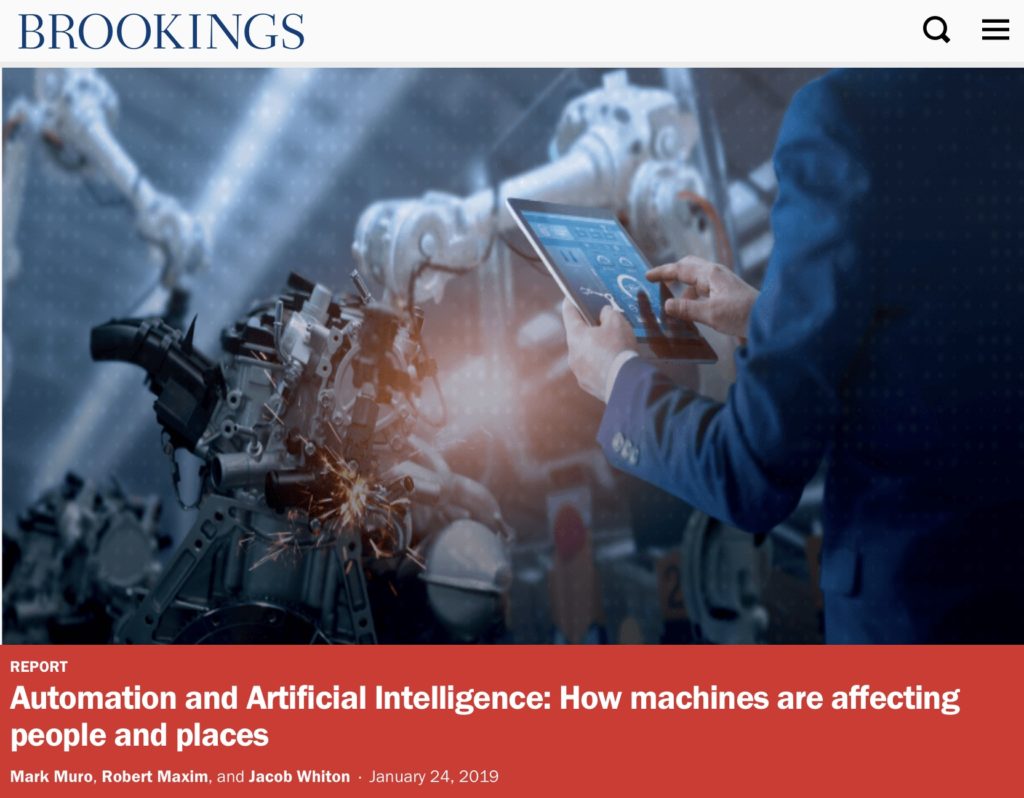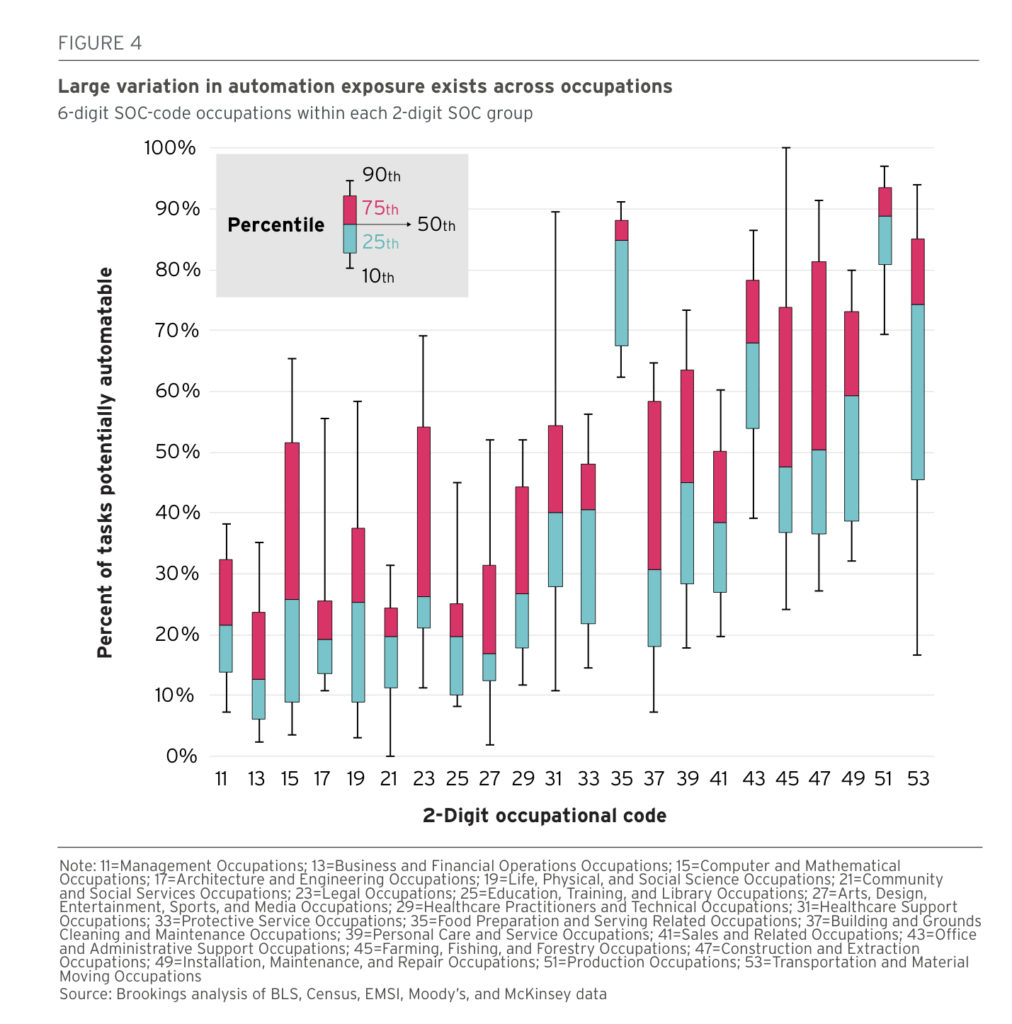The Metropolitan Policy Program at Brookings published a 100+ page study on Automation and Artificial Intelligence this week, focusing on “how machines are affecting people and places”.

The authors, Muro, Maxim and Whiton, look at data for the impact of automation. First, backward, from 1980-2016, then forward, from 2016-2030, and across some 800 occupations.
Not surprisingly, AI will affect tasks in virtually all occupations, with about 25% of US jobs facing high exposure to automation. Especially routine predictable physical and cognitive tasks are vulnerable to automation.
Men, young workers, and underrepresented communities are at higher risk. Male workers appear noticeably more vulnerable to automation than women.
Women comprise over 70% of the labor force in so-called safe occupations, such as health care, personal services, and education. Important and good news for women.
What can firms and individuals do to stay safe? Most importantly, stay in a constant learning mindset. This also was expressed to us by the majority of AI leaders around the world… the biggest issue around artificial intelligence is to stay up to date (that’s what we’re here for). In addition:
- Invest in reskilling
- Expand accelerated learning and certifications
- Make skill development more financially accessible
- Align and expand traditional education
- Foster uniquely human qualities
- Create a Universal Adjustment Benefit to support displaced workers
- Maximize hiring through a subsidized employment program
The flip side of the coin, discussed at Davos this week, are the 133 million new AI jobs created by 2022 (according to the World Economic Forum data).
And for the financial side, things also don’t look too bad, overall, as shown below, with the lucky number 13:

